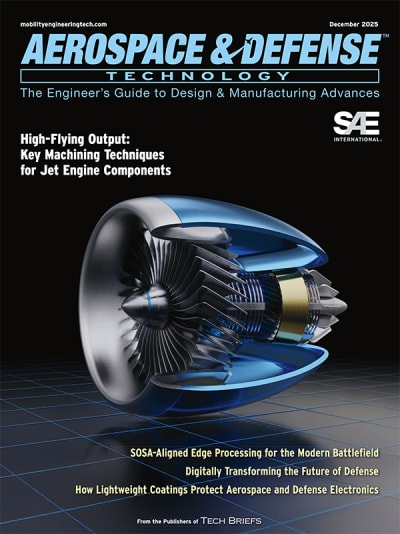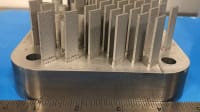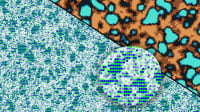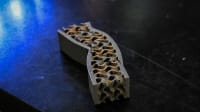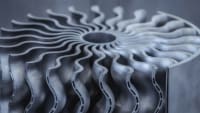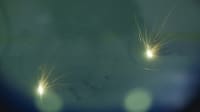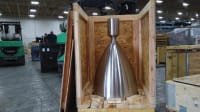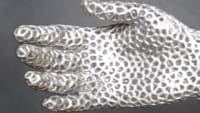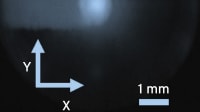These Speedy Cold Spray Machines Can 3D Print Vehicle Parts in War Zones

As “point of need” additive manufacturing emerges as a priority for the Department of Defense (DoD), Australian 3D printing provider SPEE3D is one of several companies demonstrating that its machines can rapidly produce castings, brackets, valves, mountings and other common replacement parts and devices that warfighters often need in an on-demand schedule when deployed near or directly within combat zones. DoD officials describe point of need manufacturing as a concept of operations where infantry and squadron have the equipment, machines, tools and processes to rapidly 3D print parts and devices that are being used in combat.
Based in Melbourne, Australia, SPEE3D provides cold spray additive manufacturing (CSAM) machines that use a combination of robotics and high-speed kinetic energy to assemble and quickly bind metal together into 3D-printed parts without the need for specific environmental conditions or post-assembly cooling or temperature requirements. Over the last two years, the company has participated in military point of need manufacturing challenges and demonstrations with military units from the U.S., UK, Australia and Japan among others.
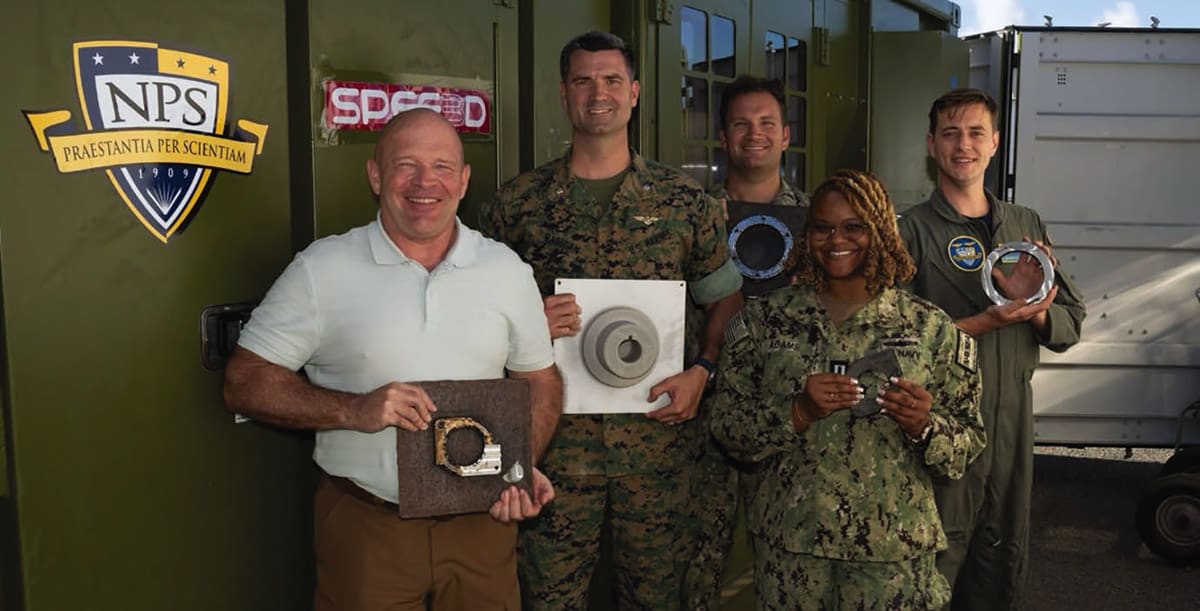
How does SPEE3D’s cold spray additive manufacturing process work? According to an explanation provided on their website, each 3D printer uses a rocket nozzle that is capable of accelerating air up to three times the speed of sound to bind metal powders together into usable parts.
“Injected powders are deposited onto a substrate that is attached to a six-axis robotic arm. In this process, the sheer kinetic energy of the particles causes the powders to bind together to form a high-density part with normal metallurgical properties,” SPEE3D’s website notes.

SPEE3D pairs its advanced CSAM machines with their Twin-SPEE3D computer aided design (CAD) software that automates tool path development, processes 3D geometries, identifies unfeasible features and generates print paths for printing or coating, according to their website. The simulation software side of their CSAM process is one of the key enablers of their ability to provide point of need manufacturing, because it requires very little training time for soldiers or military personnel that are not experts in 3D printing.
“The main advantage beyond the TwinSPEE3D software is speed – Cold Spray Additive Manufacturing (CSAM) is very fast because there is no melting of the metal. CSAM has an ultra-high-energy rocket nozzle that sprays compressed air and metal particles at mach-3 – it’s the kinetic energy of the process that binds the metal together,” a representative for SPEE3D told Aerospace & Defense Technology in an emailed statement.
“The result is very dense, strong parts that don’t require melting and reforming, which can take a lot of time. This makes it easier to demonstrate to students. Additionally, SPEE3D machines do not require the use of gases – they use compressed air – which is simpler and less risky. Lastly, because there are no lasers, they can operate almost anywhere – there is no requirement for a sterile or steady environment to ensure the part is built correctly,” the representative adds.
The process for using the TWINSPEE3D software to design and print parts can be taught to students without prior expertise within a 1-2 week period.
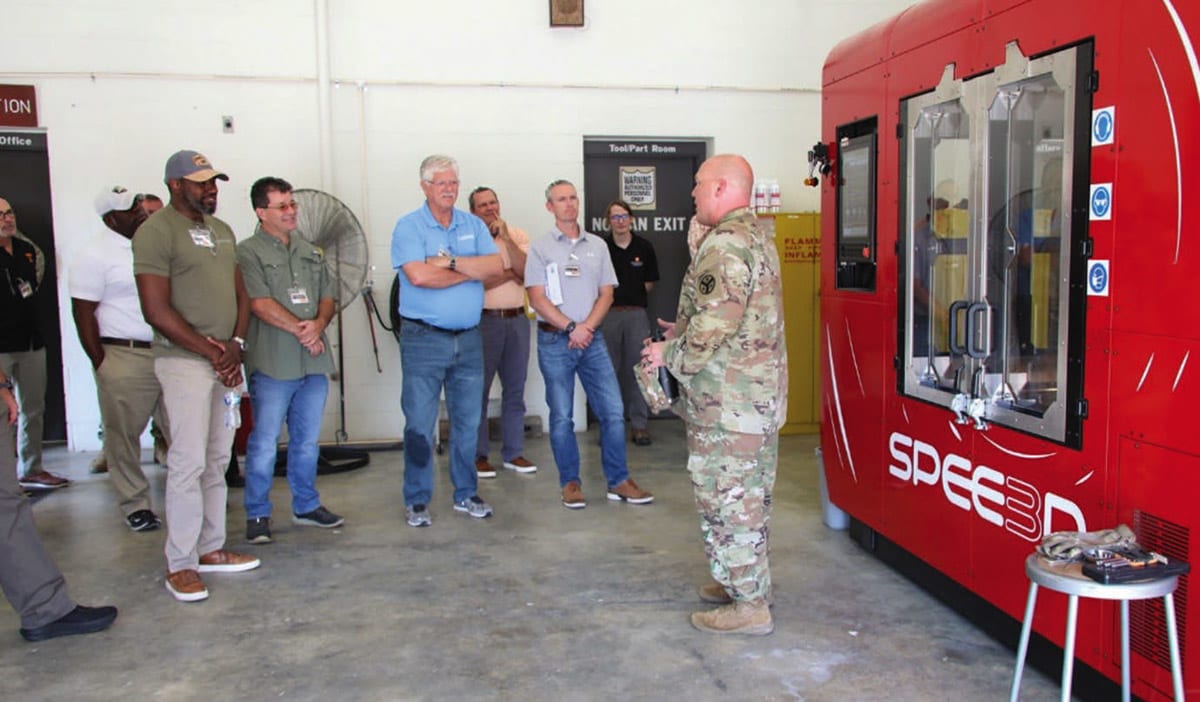
One of the most recent military demonstrations SPEE3D participated in was hosted by the U.S. Army Combat Capabilities Development Command (DEVCOM) at the University of Tennessee Knoxville, Aug. 5-16, 2024. The goal of this exercise was to take a soldier with no previous additive manufacturing experience, and train them to 3D print a transmission mount for the Army’s Bradley Fighting Vehicle.
During the Army DEVCOM demonstration’s 1.5 week schedule, an Army soldier with no prior experience was able to print the transmission mount using the TWINSPEE3D simulation software and the WarpSPEE3D 3D metal printer. The part was installed, and the vehicle was then taken out on multiple test cycles. The part showed no degradation when evaluated after the test cycles, according to an overview of the demonstration on SPEE3D’s website.

“This demonstration successfully illustrated how cold spray technology can be utilized to positively impact the warfighter in expeditionary scenarios,” Michael Nicholas, Materials Engineer at DEVCOM ARL, said in a statement about the demonstration. “Expeditionary cold systems provide added repair and manufacturing capabilities which can address supply chain challenges as would be expected in a contested logistics environment.”
According to SPEE3D’s website, Warp-SPEE3D, the 3D printer used in the Bradley Fighting vehicle demonstration, is capable of 3D printing metal parts up to Ø1m × 0.7m /Ø40" × 30" in diameter and 40kg (88lbs) in weight. The company has a total of four different 3D printers. The largest is XSPEE3D, which is the same size as a 20-foot container. WarpSPEE3D has a lower machine footprint at 13.5 feet in length, and LightSPEE3D the smallest of SPEE3D’s 3D printers, is 10.3 feet long by 4.8 feet wide. All of the machines can be easily transported by truck.
SPEE3D has highlighted the machine footprint and clearance required for its 3D printers to demonstrate how they can be transported and deployed in remote areas, where military units can use them for point of need manufacturing. The robotic assembly arm, phaser nozzle and other components are housed within the machine’s ruggedized exterior.
SPEE3Dcell is the company’s post-processing and testing unit, and when combined with XSPEE3D, can provide a full end-to-end 3D printing operation for remote manufacturing.
“SPEE3D tech has been tested in hot and freezing temperatures and it can perform in all kinds of conditions, including on or near conflict zones,” the company’s representative said.
The Army DEVCOM Bradley Fighting vehicle transmission mount demonstration is one of several demonstrations SPEE3D has participated in over the last year. In May 2023 for example, the company was named one of six winners of the Office of the Secretary of Defense Manufacturing Technology’s “Point of Need Challenge.” The company was also selected by the U.S. Navy’s Naval Sea Systems Command (NAVSEA), in partnership with the Applied Research Laboratory of Penn State University develop an entirely new cold spray method to rapidly manufacture existing parts for use in submarine systems.
SPEE3D’s machines have been tested and qualified to print materials that include aluminum 6061, aluminum bronze, copper, nickel aluminum bronze and stainless steel 316. A newer phaser nozzle introduced by the company also allows printing of copper nickel alloys, titanium, chromium carbide-nickel, tungsten carbide-nickel chrome and stainless steel.
SPEE3D engineers are still expanding the type of material its machines can print. In a Sept. 23 blog posted to SPEE3D’s website, Chase Sheeley, an Additive Manufacturing Research Engineer at SPEE3D, describes his involvement with the NAVSEA partnership to 3D print submarine parts. According to Sheeley, NAVSEA has been working with copper nickel alloy for almost 70 years, because “it provides a perfect balance of strength, ductility, and corrosion resistance for vessels and equipment at sea.”
The Navy now wants to develop a method for 3D printing copper nickel castings.
In his blog, Sheeley further describes how copper nickel castings have a high fallout rate and long lead times because they cannot be created in a foundry. He writes that developing a method for creating the alloy was “no easy task.”
“While the literature is clear about how to print, heat treat, and cool commonly additively manufactured materials like stainless steel, it doesn’t have much to say about copper nickel,” Sheeley writes. “To create a CSAM heat treatment formula for it, we’d need to navigate some uncharted territory. Our first challenge was the feedstock itself. Unlike other materials, copper nickel feedstock is a blend of pure elements that gets homogenized into a final alloy via the heat treatment process. To find the right combination of elements, we simply had to experiment — and the success of each experiment couldn’t be determined until each part had undergone heating and cooling. This, naturally, took time.”
Sheeley goes on to confirm that the company has developed a method for printing copper nickel, and is now focused on repeatability.
“There’s much to be done to optimize the process and deliver a material powder that can safely and reliably replace a traditionally manufactured part used in a variety of critical applications,” Sheeley writes. “While copper nickel has been our primary focus, we are continuously exploring new horizons in material science to broaden our capabilities and meet diverse industry needs.”
This article was written by Woodrow Bellamy III, Senior Editor, SAE Media Group (New York, NY).
Top Stories
INSIDERDefense
![]() F-35 Proves Nuke Drop Performance in Stockpile Flight Testing
F-35 Proves Nuke Drop Performance in Stockpile Flight Testing
INSIDERMaterials
![]() Using Ultrabright X-Rays to Test Materials for Ultrafast Aircraft
Using Ultrabright X-Rays to Test Materials for Ultrafast Aircraft
INSIDERManufacturing & Prototyping
![]() Stevens Researchers Test Morkovin's Hypothesis for Major Hypersonic Flight...
Stevens Researchers Test Morkovin's Hypothesis for Major Hypersonic Flight...
INSIDERManufacturing & Prototyping
![]() New 3D-Printable Nanocomposite Prevents Overheating in Military Electronics
New 3D-Printable Nanocomposite Prevents Overheating in Military Electronics
INSIDERRF & Microwave Electronics
![]() L3Harris Starts Low Rate Production Of New F-16 Viper Shield
L3Harris Starts Low Rate Production Of New F-16 Viper Shield
INSIDERRF & Microwave Electronics
Webcasts
Energy
![]() SAE Automotive Engineering Podcast: Additive Manufacturing
SAE Automotive Engineering Podcast: Additive Manufacturing
Manufacturing & Prototyping
![]() A New Approach to Manufacturing Machine Connectivity for the Air Force
A New Approach to Manufacturing Machine Connectivity for the Air Force
Automotive
![]() Optimizing Production Processes with the Virtual Twin
Optimizing Production Processes with the Virtual Twin
Power
![]() EV and Battery Thermal Management Strategies
EV and Battery Thermal Management Strategies
Energy
![]() How Packet Digital Is Scaling Domestic Drone Battery Manufacturing
How Packet Digital Is Scaling Domestic Drone Battery Manufacturing
Materials
![]() Advancements in Zinc Die Casting Technology & Alloys for Next-Generation...
Advancements in Zinc Die Casting Technology & Alloys for Next-Generation...

